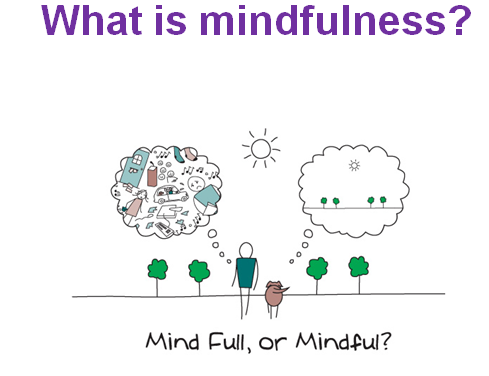
The word mindfulness seems to have become a bit of a buzz phrase lately. It is often linked with discussions about leadership, neuro-science, focus, high performance and clarity. I don’t know about you but I have almost become a bit de-sensitized to that kind of language. After all, we all KNOW about that stuff don’t we?
We all know that if we spend a few minutes a day “being mindful” it will reduce our stress, improve our clarity of thought, help change the brain positively in ways we never knew we could and generally add to an overall sense of well being and happiness. You did know that didn’t you?
If yes, then do you practice that every day? If yes, then please leave a comment as to how this practice is changing your perception and experience of living. If you know about mindfulness but don’t practice it, why is that? and please keep reading.
And if you didn’t know then keep reading.
I work with people every day who are very successful, busy and looking to move to a higher level of achievement. The key ingredient or factor that most people say they want to change is more time, more clarity of thought, direction, better relationships both at the workplace and at home. An underlying theme for many is that they have everything they have ever wanted, and have this ‘so what’ feeling – that ‘is this all there is?’ question.
Naturally of course, that ‘is this all there is question’ you only ever ask yourself, you never say it out loud. Well, that is of course, unless you do work with a coach who allows you to be real and say out loud the things that you never have before.
Once spoken, (to me anyway!)there is no turning back. You can view this as a scary thing, or you can view this as a whole new chapter. You decide. What you do from that point has many roads to be explored. Take a peek down through the layers of who you are and what you really, really want.
If you are not ready to embark on that kind of rich inquiry and potential change but you really just wish you could get rid of some of the stress and think clearer, then a simple mindfulness practice each day, yes, I mean each day, will deliver. I am not talking about becoming a monk and living in a Zen like state. I am talking a few minutes every day. A few minutes, it’s not much…..
So let’s get clear again, just what is mindfulness?
Well, without sounding cavalier, being mindful is the opposite of being mindless. Actions and habits that we do without thinking much like driving a car, answering emails, attempting to ‘multi task’ ( no such thing but we’ll get back to that in another post) are all coming from our deeper wiring. Habits that we created by doing something repetitively eventually became hard wired. This is your brain being very efficient. These habits you can do ‘mindlessly’ . You don’t really notice what you are doing, what you are thinking, what you are feeling, seeing etc.
Mindfulness then is as defined by Oxford University
- pays attention to thoughts, feelings and body sensations to become directly aware of them, and better able to manage them;
- is of potential value to everybody to help find peace in a frantic world.
Neuroscientific studies find…
- changes in those areas of the brain associated with decision-making, attention and empathy in people who regularly practice Mindfulness meditation;
- that meditation ( that is mindfulness) increases blood flow, reduces blood pressure, and protects people at risk of developing hypertension: it also reduces the risk and severity of cardiovascular disease, and the risk of dying from it.
People who have learned mindfulness…
- are less likely to get stuck in depression and exhaustion, and are better able to control addictive behaviour.
- discover positive changes in well-being;
- experience long-lasting physical and psychological stress reduction;
So if you are someone just wanting to relax and gain some time and clarity learning some simple mindfulness processes and sticking with it, will help you achieve that. At the end of this post is a link to a 10 minute video about mindfulness and how easily you can make this part of your every day life.
If you enjoy reading then Dr Craig Hassed’s book “Know Thyself” is a great little book with plenty of tools throughout.
If that sounds like more than you can cope with right now then just start out by practising some of these really simple mindfulness actions.

- Practice mindful eating: We often eat “mindlessly” not paying attention to what or how much we’re consuming. Next time you eat a snack or meal, be mindful. Pay attention to all the sensations that are associated with eating, such as smell, sight, touch, taste, and sound. Be mindful with every bite you take. You can even be mindful of the sensations associated with swallowing your food.
- Mindfully wash the dishes: Washing the dishes is a chore that many of us do not like, and oftentimes, we simply try to get it done as quickly as possible. However, washing the dishes is an excellent time to practice mindfulness. There are a number of experiences associated with washing the dishes that we can bring mindfulness to. For example, we can mindful of what each dish feels like in our hands, the temperature of the water against our skin, or the smell of the soap we are using. You might find that practicing mindfulness while you wash dishes completely changes that experience.
Here are some more everyday activities that can provide you with the opportunity to practice mindfulness:
- Taking a shower – feel of the water, the smell, texture of the soap, feel of your feet on the floor, what are you thinking.
- Going for a walk ( or running from meeting to meeting, walk, notice the feel of your feet, the air, the sounds, the smells, wake up all of your senses)
- Sitting in a meeting – really start to notice what you notice.
- Exercising- feeling the parts of your body as you exercise them, the smell of the gym / environment, your thoughts
- Cooking
- Listening to the radio
- Drinking a cup of coffee – feel the weight of the cup, the temperature, the feel of the liquid, the taste, the movement of your hand and arm….
- Waiting in line at the grocery store
In other words, any time any where you can stop and engage all of your senses. Notice too your thoughts and what your thoughts are. Remember just because you have a thought doesn’t mean you have to keep it.
I’d love to hear from you if your practice mindfulness already, or if this is your first time.
